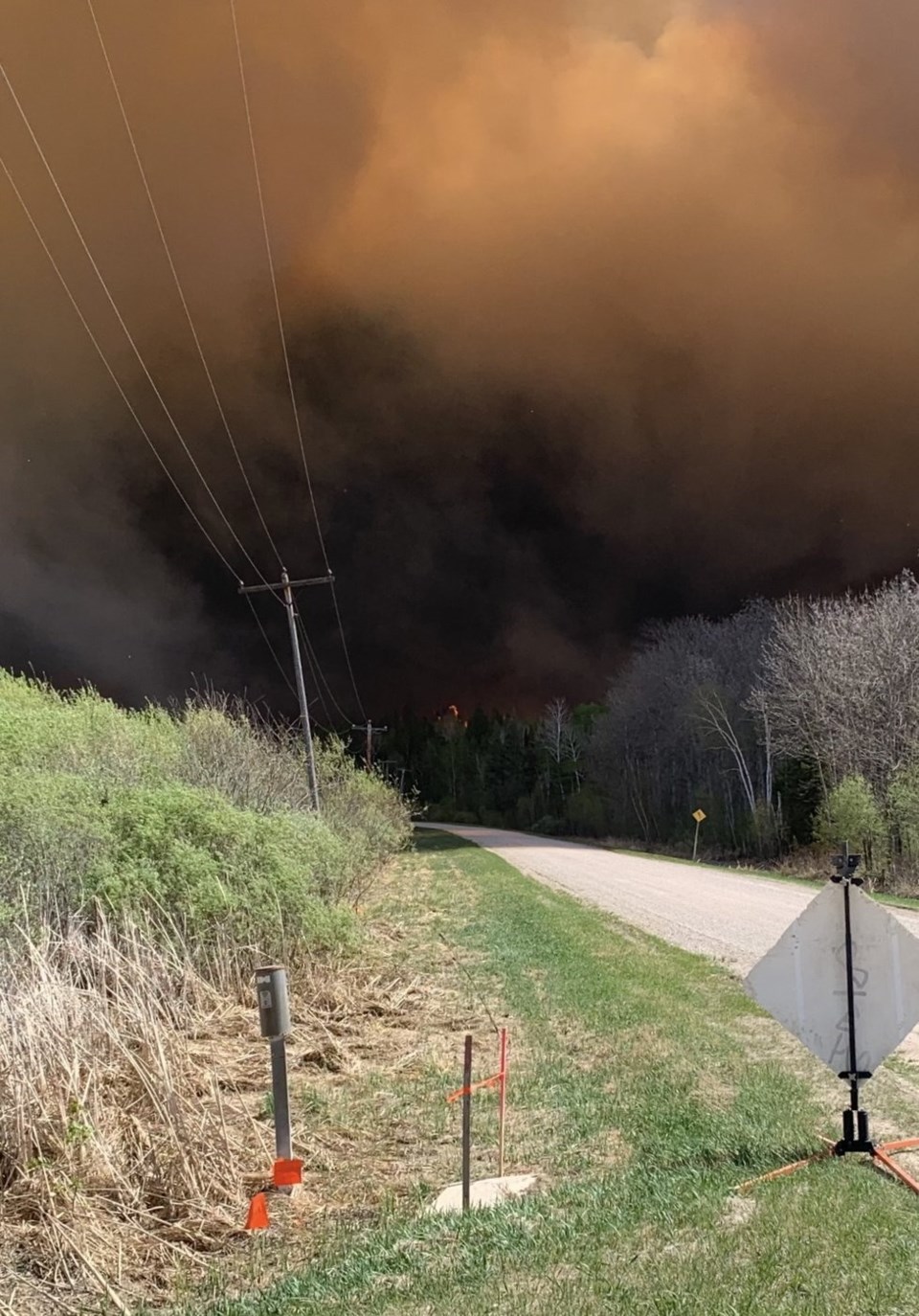WINNIPEG — The bodies of two people were found in an area northeast of Winnipeg as fast-moving wildfires spurred by dry, hot and windy conditions prompted hundreds to evacuate Wednesday.
RCMP said the bodies are believed to be of a man and woman, and that it may take days to confirm their identities.
It is believed they died from injuries sustained during the fire, Supt. Chris Hastie told a news conference.
Loren Schinkel, reeve of the Rural Municipality of Lac du Bonnet, a popular lakefront cottage area northeast of Winnipeg, said the whole community is grieving.
"This is a truly tragic event," said Schinkel. "We're a very close-knit community here, and certainly the family, friends and loved ones that have been impacted by this have our profound sympathies."
Premier Wab Kinew offered his condolences and said the province is committed to supporting Manitobans during this difficult time.
"I was deeply saddened to learn of the tragic loss of two Manitobans due to the wildfires in eastern Manitoba. My heart goes out to their loved ones," Kinew said on social media.
About 1,000 people were ordered to leave the area Wednesday as fires continued to burn in eastern Manitoba.
Police said they received reports Tuesday that some residents were stranded due to the quickly spreading fire, but were unable to get to the site because of the conditions. On Wednesday morning, police were able to get to an area just off Wendigo Road and found the two bodies.
"We were able to confirm our worst fears," Hastie said.
Police said they had no additional reports of people unaccounted for.
Some structures have been lost, but a damage assessment has yet to be done.
The blaze near Lac du Bonnet remained out of control Wednesday, covering roughly 30 square kilometres. Near Nopiming Provincial Park, a second out-of-control fire covered 1,000 square kilometres.
Crews had not been able to respond to that fire because of "extremely volatile fire behaviour," making it unsafe, said Kristin Hayward with the Manitoba Wildfire Service.
Days of hot, dry and windy conditions have fed fires in and around provincial parks in eastern Manitoba. Mandatory evacuation orders were put in effect, and many hiking trails, resorts and other amenities were off-limits.
The Manitoba government said there are 24 active fires, six of which are of concern.
Mandatory evacuation orders have been issued for five provincial parks, three local authorities, three northern communities and 24 cottage subdivisions.
The province added the Whiteshell Provincial Park to the list due to "hour-to-hour" changing weather conditions. The park is set to be closed starting Thursday.
"Manitoba is one of the most active jurisdictions right now in Canada in terms of the complexity of the fires that we have," Hayward told a news conference.
The province is expected to see some precipitation later in the week, but Hayward said the forecasted amounts are not in the range that would help put out the flames or make any appreciable difference in suppressing them.
"We would need a good soaking rain," she said. "A couple of inches, a couple days of rain to keep the humidity levels high. We want to keep those kind of moist conditions happening, lower temperatures. Those would all help our fire situation."
Meanwhile, the province is monitoring a fire near its boundary with Ontario.
Ontario officials have said the out-of-control fire near Ingolf, roughly 70 kilometres west of Kenora, has more than doubled since Tuesday to around 230 square kilometres.
Provincial police say they are helping to evacuate a First Nation located northeast of the fire. Residents and cottagers along several lakes near the boundary, including Malachi and Mantario, have also been encouraged to evacuate.
Fire officials say the situation is rapidly evolving and that additional orders or restrictions may come into effect if necessary to protect public safety and facilitate fire suppression.
— With files from Jordan Omstead in Toronto.
This report by The Canadian Press was first published May 14, 2025.
Steve Lambert and Brittany Hobson, The Canadian Press


